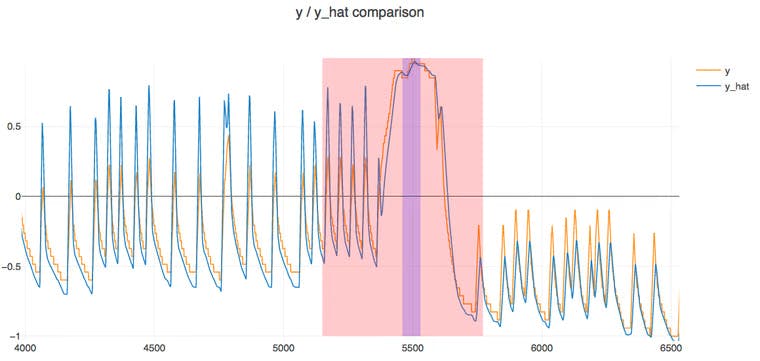Introduction
Anomaly detection is the process of identifying and detecting the deviation away from the normal functioning of a set of data. This pattern of data behavior is an exception to what is recognized. It is also not in sync with the rest of the data instances. An anomaly is not necessarily a negative sign; it just means something different has occurred.
Discovering these outliers helps to prevent and combat security breaches and risks and measure business activities. It prevents the whole dataset from being vulnerable to attacks and pitfalls.
Anomalies are sometimes used interchangeably with outlier detection.
Why is Anomaly detection important?
Anomaly detection is important to discover indistinct parts of data that can be compared with other data. This exception could serve as a significant pointer that could impact the business if not addressed.
Anomaly detection also serves as a tool to assess patterns and inaccuracies. It singles out flaws in data to make it accessible for scrutiny and observation down to the source.
This strategy/process allows an organization to make data-driven decisions that may affect its future business. It identifies the organization’s weakest link or threats and helps strengthen them
In this article, we will explore some of the most popular open source software used for anomaly detection.
Top open source software for Anomaly detection
The following is a list of software programs that have been made available to the public as open source and are therefore used in anomaly detection.
Chaos Genius

Chaos Genius is an open source data analytics engine, which uses machine learning to identify outliers and root causes in high-volume datasets. With ChaosGenius, users can manipulate large datasets to explore KPIs (key performance indicators), enabling them to make better decisions about their data.
Alibi-detect

Alibi-detect is an open source Python library focused on Outlier, adversarial, and drift detection. The Alibi-detect package includes detectors for a range of data formats including texts, tabular data images—including VTK format files. In addition to these features, Alibi Detect uses many different techniques to find anomalies in your data.
Dataiku DSS Community

Dataiku DSS is a collaborative platform that provides companies with software intended to aid them in their day-to-day decision-making. The software works by allowing data scientists and analysts to explore databases containing all sorts of information about the business—from sales figures, stock prices, surveys, etc.—and turn that raw material into insights they can use for strategic planning purposes.
Weka data mining

Weka is an anomaly-detecting software platform that supports several data mining tasks, including preprocessing, clustering, classification, and visualization. Weka provides access to SQL databases through Java Database Connectivity. It can process the results returned by a database query and store or output them in different file formats such as comma-separated values (csv) or Excel spreadsheets (.xls).
Weka is also open-source software issued under the GNU General Public License.
Numenta

Numenta Anomaly Benchmark (NAB) is an open source framework that provides a benchmark for evaluating the performance of real-time anomaly detection methods. The goal of NAB is to provide comparable performance results across a variety of datasets and tasks, so researchers can easily compare their results with those from other systems.
NAB includes data sets from both synthetic and real-world domains and provides configurable benchmarks for comparing anomaly detection methods on these data sets. The benchmarks allow users to specify the desired accuracy level, false positive rate, and false negative rate for their experiments. NAB also enables users to run their own experiments by configuring the parameters of each data set and task.
Numenta Anomaly Benchmark (NAB) was created to allow data scientists and machine learning experts to compare results from their anomaly detection algorithms in an apples-to-apples way. NAB is an open source framework for creating benchmark streams of events, which consist of:
- A dataset with real-world, labeled data files.
- A scoring mechanism that rewards early detection and online learning.
Scikit-learn

Scikit-learn is a Python library for machine learning built on NumPy, SciPy, and Matplotlib. It features various classification, regression and clustering algorithms including support vector machines, random forests, and gradient boosting.
"Scikit-learn" is an abbreviation for "machine learning in Python". The name was chosen to mimic the "SciPy" library (which provides scientific tools in Python), and it has been said that the logo is based on that of NumPy.
Scikit-learn supports all the common feature extractors such as tree-based estimators (Random Forest, Gradient Boosting) and linear models (Lasso, Ridge Regression). It also provides unsupervised learning algorithms such as clustering or dimensionality reduction techniques. The library includes several support vector classification methods as well.
Scikit-learn's data structures are optimized for speed, but they are also designed to be easy to use so that they can be easily understood by new users.
The library is free software released under the 3-clause BSD license.
Telemanom

Telemanom is an open source machine learning anomaly detection system. It has been designed to be easily integrated with other tools, such as log analysis, SIEM, and other security systems.
Telemanom provides a simple API and command line tool to integrate your own data or use the built-in datasets.
Telemanom is a machine-learning library for anomaly detection. It can be used to detect anomalies in many different application domains and data types, including time series, sensor data, and text. It supports multiple data formats and comes with a rich set of pre-trained models that you can use as a starting point for your own analysis. The library is easy to use and well-documented. It is a fully open-source software released under the Apache 2.0 license.
It has included several pre-built models that can be used to detect anomalies in your data, such as:
- User behavior anomalies (e.g., user accounts that are not active)
- Network traffic anomalies (e.g., connections from internal IP addresses)
- and more..
Netdata

Netdata is an open-source software that tracks performance metrics in real-time to generate user-friendly graphs. The program was designed to reveal details about application behavior, so users can be aware of the state at all times.
Netdata's installation is straightforward and it comes with a built-in anomaly detection feature powered by machine learning.
Its main features are:
- Real-time agent that runs on a wide range of systems—servers, containers, even IoT/edge devices.
- Metrics from applications, hosts, containers, and virtual machines
- Support for Docker containers and Kubernetes Pods.
- Easy installation on any Linux/mac/windows based server.
Pyod

PyOD is a library for detecting outliers in multivariate data. It's particularly suited to the challenging task of anomaly detection—also known as outlier or novelty detection. Since 2017, PyOD has been used in more than 10 million downloads. It includes more than 40 detection algorithms—classical LOF (SIGMOD 2000), and the latest ECOD (TKDE 2022) are among them.
PyOD provides a simple API for detecting anomalies using machine learning models such as Support Vector Machine (SVM), Naive Bayes and Decision Tree. It also provides methods to visualize anomaly scores and anomalies using plotly, a popular visualization library.
Here are some examples of what you can do with PyOD:
- Visualize your data using matplotlib or seaborn
- Train your own model using scikit-learn or XGBoost
- Make predictions on new data without training again
If you are looking for a python library to discover your data, you can consider Pyod.
Conclusion
Anomaly detection software can be used in a variety of ways, such as cybersecurity and security systems. It's also helpful for detecting faults and managing financial fraud. In this article, we discussed anomaly detection—and then went on to list several open-source software packages that are frequently used for this purpose.
#beginners #hacktoberfest
#hacktoberfest-submission #hacktoberfest-with-aviyel #opensource
